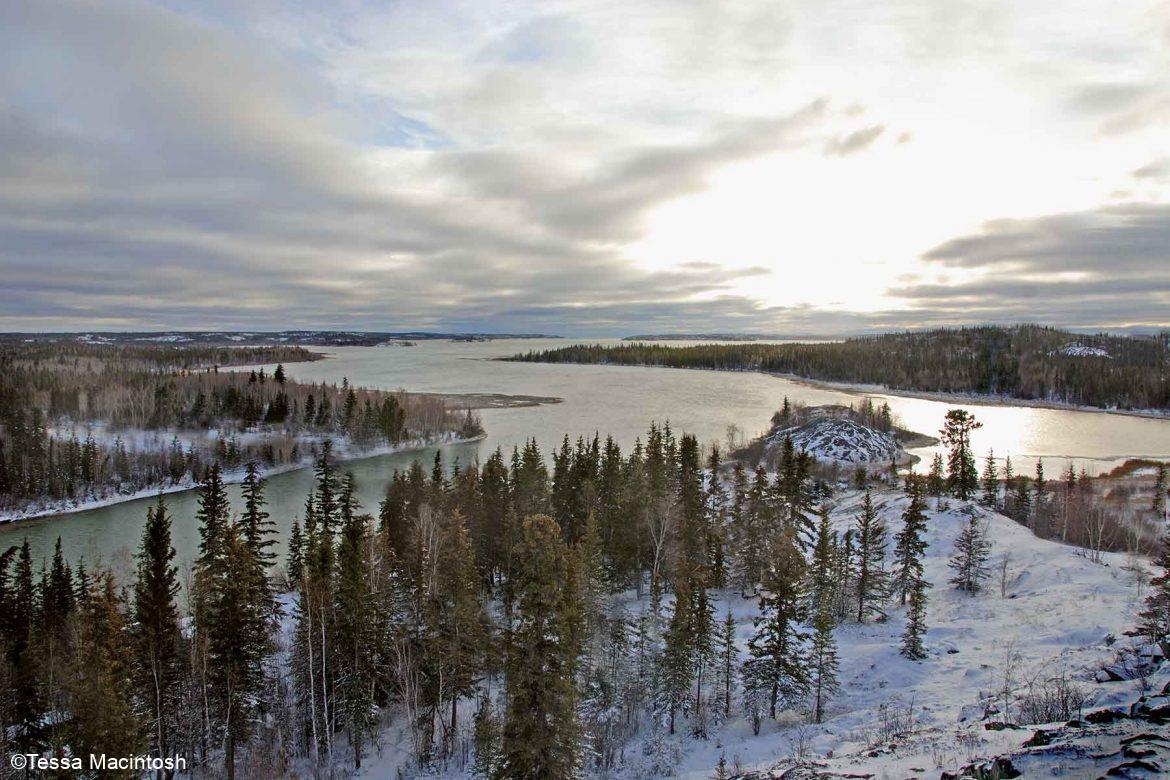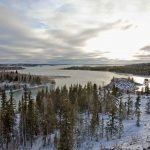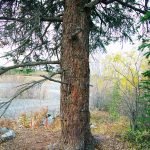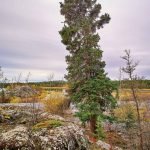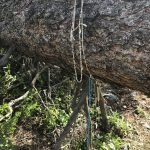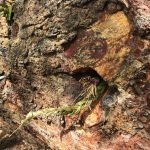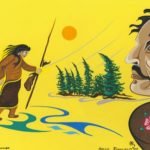Wıı̀ledeh
Giant Beaver on the Yellowknife River
Yamǫǫ̀zha
Akwewhaà, Wıı̀lıdeeche tsàcho tsàkę̀ę̀ necha whehtsı̨, wet’à Tı̨ndee ts’ǫ̀ tı etł’ı haàdı̀. Done k’ıɂelà t’à akǫ wegaà nàgèakı̨ dè tsà goɂelà nełeyehtł’ı̀ t’à done tı t’à łahdè.
Yamǫǫ̀zha weɂı̨k’ǫǫ̀ nàtso t’à done ts’àdı ha akǫ nıı̀tła. Wıı̀lıdeè goòt’ı̨ dıı Yamǫǫ̀zha ts’ǫ̀ dıı hagedı, tsàcho ats’ǫ gok’adawò gedı t’à Yamǫǫ̀zha akǫ gok’atah ha akǫ̀ ts’ǫ̀ɂetłah.
Wıı̀lıdeèche, Yamǫǫ̀zha tsàkę̀ę̀cho yı̨ı̨̀gǫhɂǫ. Wets’ǫ ehtł’èkàgoò necha tł’ıhgǫǫ̀ t’à, hayeèzǫ. Tsàcho goyı̀ı nàde nǫ. Įwhąąt’ı, tsàcho tsàkę̀ę̀ yeɂǫ̀ǫ̀ ts’ǫ̀ ayı̨ı̨̀la t’à Tı̨ndee ts’òemı̨. Wet’à tı Tı̨ndee ts’ǫ̀ haı̨̀lı̨ ajà. Achı̨ done akǫ łıwe k’agede ha esąnı̨le ajà.
Tsàkę̀ę̀ kwe whelı̨ eyıts’ǫ ehdaà elı̨ ajà, Kwekaàts’òa wıı̀yeh ajà. Yamǫǫ̀zha wets’ǫ ehtł’èkàgoò ts’ı wegaà ehdaà necha whelı̨, Ts’ıwhacho wıı̀yeh ajà. Dıı dzęę̀ gots’ǫ̀ done Kwekaàts’òa eyıts’ǫ Ts’ıwhacho gaà aget’ı̨ nındè ndè ts’agehdı̀.
Wıı̀ledeh goèt’ı̨ dıı gondı gehtsı̨, eyıts’ǫ edàanı̀ done kǫ̀ta nàgedè weghǫ chekoa nı̨htł’è dı̨ agehɂı̨ nàgı̨̀tł’è.
Giant Beaver on the Yellowknife River
Long ago, a giant beaver built a big dam at the mouth of the Yellowknife River, blocking the flow into Great Slave Lake. When people canoed nearby, the beaver tipped their canoes and drowned them.
Yamǫǫ̀zha was a very powerful medicine man who came to help the people. The Yellowknives Dene told him of the trouble the giant beaver was causing. Yamǫǫ̀zha decided to investigate.
At the mouth of the Yellowknife River, Yamǫǫ̀zha found a massive beaver lodge. He took his huge shovel with a scoop made of woven babiche and stuck it into the lodge to open it. He found a giant beaver living inside. Quickly, the beaver pushed his lodge to one side and swam into Great Slave Lake to escape. This freed the flow of the river into the lake. The people could travel and fish there safely again.
The beaver’s lodge turned to stone and became a point, called Kwekaàts’òa. Yamǫǫ̀zha’s shovel still exists as a large spruce tree on the point, known as Ts’iwhacho. To this day, people pay their respects to Kwekaàts’òa and Ts’iwhacho when traveling in the area.
Adapted from Grade Four Social Studies Curriculum, as told by the Yellowknives Dene.
